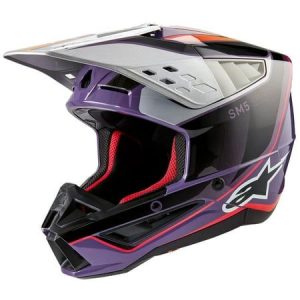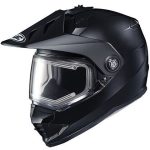Ever looked at your motorcycle helmet and felt a pang of boredom? Maybe it’s scratched, faded, or simply doesn’t reflect your unique style anymore. Fear not, fellow riders! Repainting your motorcycle helmet is a fantastic way to breathe new life into it, personalize your gear, and stand out on the road. But before you grab the nearest can of spray paint, there are some crucial steps to consider for a successful and safe helmet makeover.
This comprehensive guide will equip you with everything you need to know about repainting your motorcycle helmet. We’ll delve into the preparation process, explore different painting techniques, and guide you through the steps of achieving a stunning, long-lasting finish. So, grab your tools, unleash your creativity, and get ready to transform your helmet!
Safety First – Why Proper Motorcycle Helmet Repainting Matters
Motorcycle helmets are designed to protect your head in the unfortunate event of an accident. However, improper repainting techniques can compromise the helmet’s structural integrity, potentially reducing its effectiveness. Here’s why taking the right approach to repainting your helmet is crucial:

- Heat Sensitivity: Some paints and thinners can emit harmful fumes or react with the helmet’s material, weakening its shell.
- Weight Gain: Applying excessive layers of paint can add weight to the motorcycle helmet, affecting comfort and balance.
- Reduced Visibility: Improper masking can lead to paint overspray on the visor, hindering your vision while riding.
By following the steps outlined in this guide, you can ensure a safe and visually appealing helmet repaint.
Gearing Up – Essential Tools and Materials
Before diving into the repainting process, gather the necessary tools and materials. Here’s a checklist to get you started:
- Safety Gear: Safety glasses, respirator, gloves
- Cleaning Supplies: Degreaser, mild soap, water, microfiber cloths
- Sandpaper: 400-grit and 600-grit wet/dry sandpaper
- Masking Tape: Low-tack masking tape and high-quality painter’s tape
- Drop Cloths: Plastic sheeting or newspaper to protect your workspace
- Paint: Helmet-specific primer, paint (spray paint or airbrush paint), and clear coat (all helmet-specific)
- Optional: Paint thinner (for specific cleaning tasks), tack cloth (for removing dust particles)
Remember, using the right type of paint designed specifically for helmets is essential.
Prepping for Perfection – The Art of Motorcycle Helmet Preparation
A meticulous preparation process is the foundation for a flawless paint job. Here’s a step-by-step breakdown:

- Remove Detachable Parts: Take off the visor, vents, padding, and any other removable components. Label them for easier reassembly later.
- Thorough Cleaning: Using degreaser and mild soap, meticulously clean the helmet’s exterior to remove dirt, grime, and grease. Rinse thoroughly and dry completely with a microfiber cloth.
- Sanding for Smoothness: Using 400-grit wet/dry sandpaper with soapy water, gently sand the entire helmet surface in a circular motion. This creates a slightly rough surface for better paint adhesion. Wipe the helmet clean with a damp cloth and allow it to dry completely.
- Masking Up: Use low-tack masking tape to cover areas you don’t want painted, like the visor mounting points and vents. For intricate details, utilize high-quality painter’s tape for a clean line.
- Another Round of Cleaning: After masking, use a tack cloth (optional) to remove any dust particles that may have settled on the motorcycle helmet.
Prime Time – Laying the Foundation for Paint Adhesion
Now it’s time for the primer, which acts as a crucial layer between the helmet’s original finish and the new paint. Here’s what to do:
- Shake Well: Thoroughly shake the motorcycle helmet-specific primer can for at least two minutes.
- Thin Coats are Key: Apply light, even coats of primer from a distance of 10-12 inches. Allow each coat to dry completely following the manufacturer’s instructions. Apply 2-3 thin coats for optimal coverage.
- Sanding (Optional): For an exceptionally smooth finish, you can lightly sand the primed surface with 600-grit wet/dry sandpaper and soapy water after the final coat dries. Wipe clean and dry completely.
Painting Like a Pro – Choosing Your Motorcycle Helmet
There are two main approaches to repainting your helmet: spray paint cans and an airbrush. Let’s explore the pros and cons of each method to help you decide which one suits you best:

Spray Paint Cans:
- Pros: Easy to use, readily available, affordable, perfect for beginners.
- Cons: Limited control over paint application, achieving intricate designs can be challenging, requires good ventilation while spraying.
Airbrush:
- Pros: Offers superior control for detailed designs, allows for smoother paint application and fading effects.
- Cons: Requires practice and proper technique, airbrush equipment can be expensive, additional setup and cleaning involved.
Here are some additional factors to consider when choosing your painting technique:
- Complexity of Design: If you’re aiming for a simple, solid color scheme, spray paint is a great option. For elaborate designs with sharp lines or fades, an airbrush is the way to go.
- Your Experience Level: If you’re new to painting, start with spray paint. Airbrushing requires practice and familiarity with the equipment.
- Budget: Spray paint is generally more affordable than airbrush equipment and paint.
No matter which technique you choose, remember to always use well-ventilated workspace and wear proper safety gear like a respirator and gloves.
Let’s Get Colorful – Applying Paint and Achieving Your Vision
Now that you’ve prepped your helmet and chosen your painting method, it’s time for the fun part – applying the paint! Here are some general guidelines to follow:
For Spray Painting-Motorcycle Helmet
- Shake Well: Shake the can vigorously for at least two minutes before use.
- Thin Coats: Apply light, even coats from a distance of 10-12 inches. Allow each coat to dry completely as per the manufacturer’s instructions.
- Multiple Coats: Apply 2-3 thin coats for a smooth, opaque finish.
- Building Up Color: It’s always better to add more thin coats than apply one thick coat that can run or drip.

For Airbrushing-Motorcycle Helmet
- Thin the Paint: Use the appropriate airbrush paint thinner to achieve the correct viscosity for smooth spraying.
- Practice on Scrap Material: Before tackling the helmet, practice your technique and desired effects on a scrap piece of plastic or cardboard.
- Trigger Control is Key: Mastering the trigger control on your airbrush is essential for achieving precise lines and fades.
- Multiple Layers: Build up color gradually with thin passes of the airbrush.
General Tips for Both Techniques-Motorcycle Helmet
- Work in a well-ventilated area.
- Wear a respirator and gloves for safety.
- Apply paint in a smooth, sweeping motion.
- Take breaks and allow each coat to dry completely before applying the next.
- Less is more – it’s easier to add more paint than remove it.
Sealing the Deal – The Importance of a Clear Coat
Once you’ve achieved your desired paint job, it’s crucial to apply a clear coat to protect the paint and create a glossy or matte finish (depending on your preference). Here’s how:

- Wait for Complete Drying: Ensure the paint is completely dry before applying the clear coat. Refer to the manufacturer’s drying time recommendations.
- Shake Well: Shake the clear coat can thoroughly for at least two minutes.
- Thin Coats: Apply light, even coats of clear coat from a distance of 10-12 inches, allowing each coat to dry completely in between. Apply 2-3 thin coats for optimal protection.
Unveiling Your Masterpiece – Reassembly and Final Touches
After the clear coat has dried completely, it’s time to reassemble your helmet and admire your handiwork! Here’s the final stretch:
- Carefully peel off the masking tape, holding the tape at a low angle to avoid lifting the paint.
- Clean Up: Wipe away any paint smudges or overspray with a damp microfiber cloth.
- Reassemble: Gently put back the visor, vents, padding, and any other components you removed earlier.
Congratulations! You’ve successfully repainted your motorcycle helmet!


